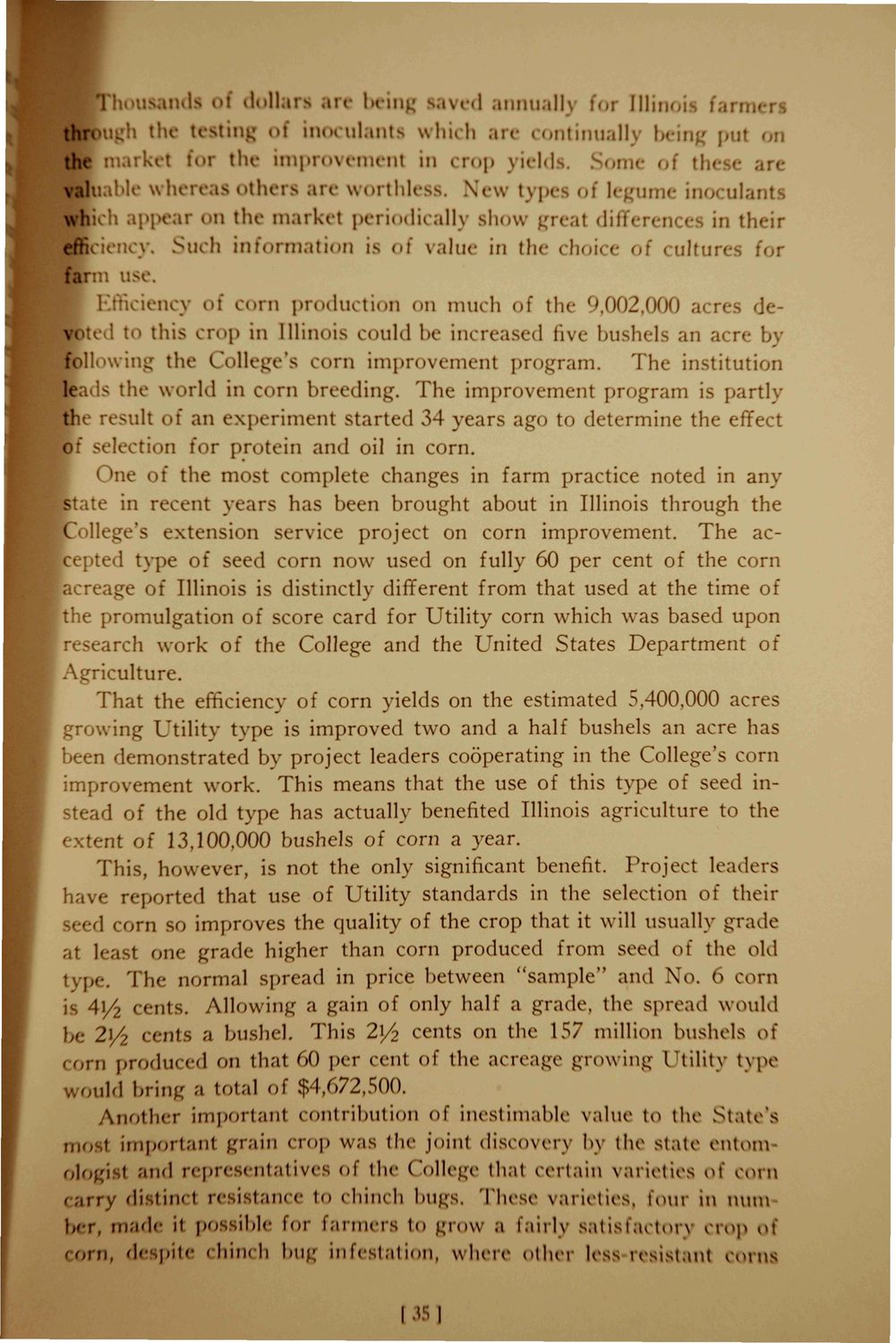Caption: Booklet - One Hundred Million (Impact of UI) (1931)
This is a reduced-resolution page image for fast online browsing.

EXTRACTED TEXT FROM PAGE:
^mdfl of dollars an I uy awd annuall; > Win r crs nl the testing mtu-ulanti which .1 ntinuall) being put th> irket !< the improvement in rop yield * of th< re valuable win is Others an vvorthli 5. \i-w types 1 h un in ilanl whi h :i| n the market peri( ill) shov t diff< no in their eft . Such ini rmation is of value in th< choi of cultun r farm us( 1 iciency of ( rn production on much of the ''.noi.000 acres de\ 1 i this crop in Illinois could be increased five bushels an ere b following the College's corn improvement program. The instituti m lea Is the world in corn breeding. The improvement program is parti} the result of an experiment started 34 years ago to determine the effect tion for protein and oil in corn. One of the most complete changes in farm practice noted in any State in recent years has been brought about in Illinois through the C llej. s extei on service project on corn improvement. The accepted type of seed corn now used on fully 60 per cent of the corn acreage of Illinois is distinctly different from that used at the time of he promulgation of score card for Utility corn which was based upon research work of the College and the United States Department of Agriculture. That the efficiency of corn yields on the estimated 5,400,000 acres growing Utility type is improved two and a half bushels an acre has een demonstrated by project leaders cooperating in the College's corn improvement work. This means that the use of this type of seed instead of the old type has actually benefited Illinois agriculture to the tent of 13,100,000 bushels of corn a year. This, however, is not the only significant benefit. Project leaders hav< reported that use of Utility standards in the selection of their eed corn so improves the quality of the crop that it will usually grade least one grade higher than corn produced from seed of the old Thi type. The normal spread in price between "sample" and No. 6 corn is 4|/2 cents. Allowing a gain of only half a grade, the spread would b 21/2 cents a bushel. This 2y2 cents on the 157 million bushels of corn prodiiM-d on that 60 per cent of the acreage growing Utility type Ould bring a total of $4,672,500. A n o t h e r important contribution of inestimable value to the State's mi important grain crop was the joint discovery by the state entomand representatives of the College that certain varieties of corn : r ry distinct resistance to c h i m b bugs. T h e s e varieties, tour in mint ber, made it possible foi farmers to grow a fairly satisfactory crop of orn, despih chinch bu infestation, where other l( ^resistant >rns I 35 I
|